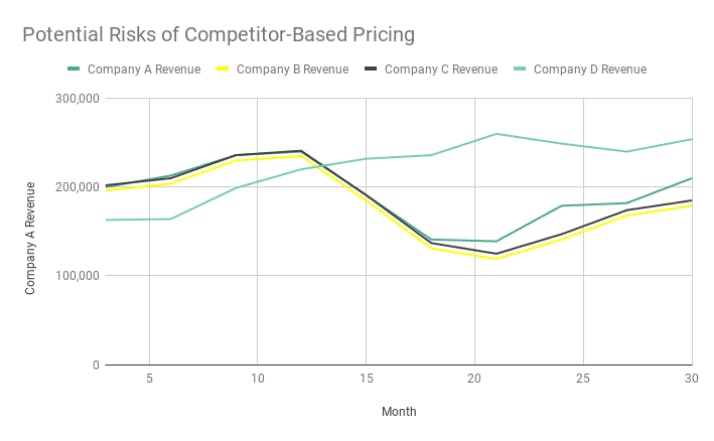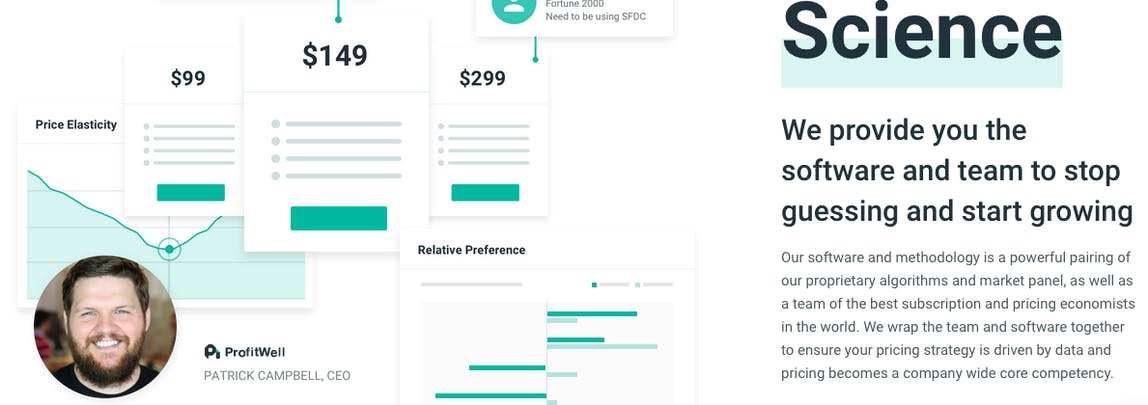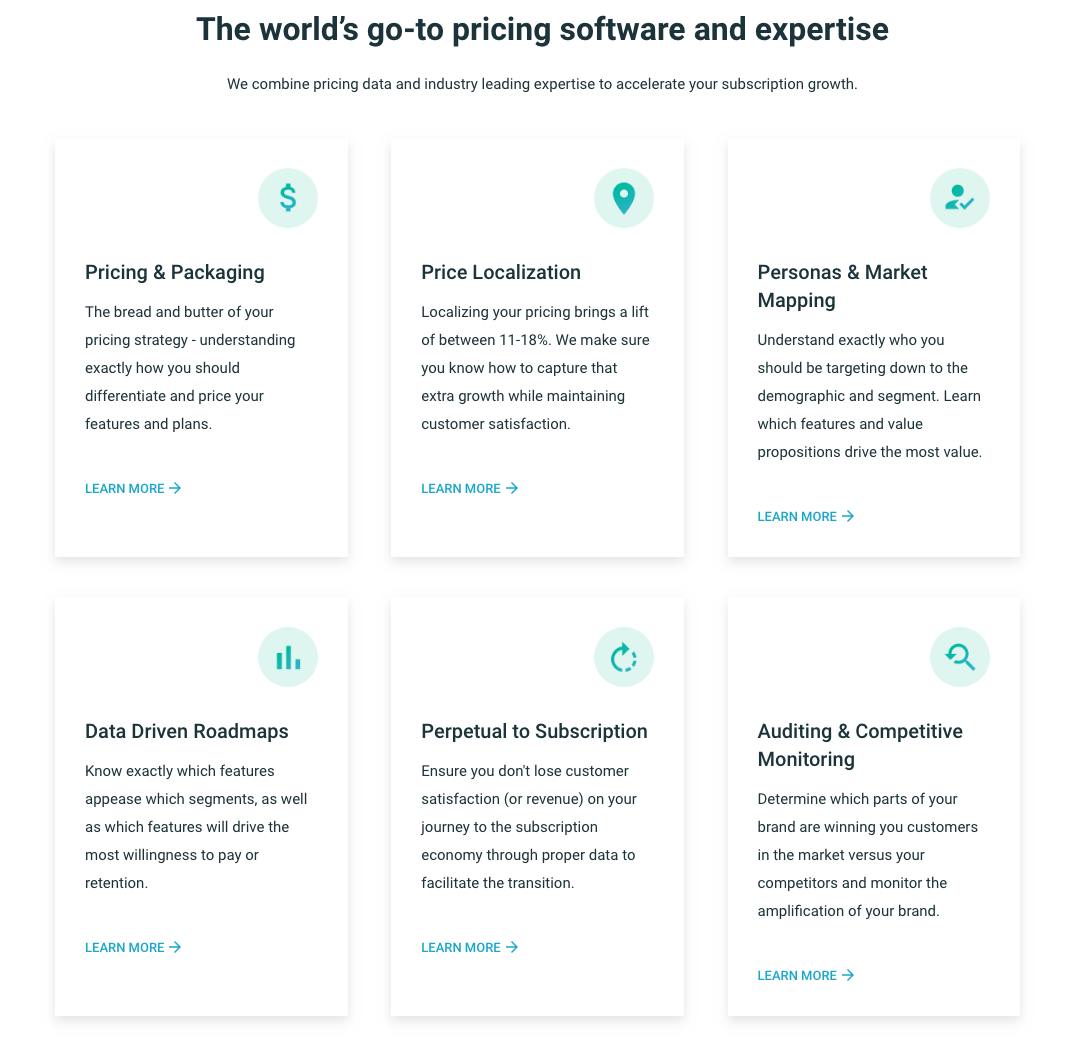Your business can’t afford to overlook it’s pricing methods. With so many to choose from, which pricing method is best for your business? Explore here.
For a young company, choosing a pricing method and establishing your overall pricing strategy can be daunting - it's the moment where you find out how much people actually value your beloved idea and how much they're willing to pay for it. That’s why it pays to get your pricing methods right.
And when we say it pays, we mean it. The choices you make with pricing methods and setting the right pricing are essential to determining the growth of your subscription business. Even a 1% improvement in pricing results in an average increase in profits of 11.1%.

What are pricing methods?
Pricing methods are ways of calculating the price of goods and services by taking into account all factors that can influence pricing strategy. Factors can include the product or service, its life cycle, market competition, and target audience.
Choosing between pricing methods isn’t always easy, but it’s something no business can afford to get wrong. The best pricing method for a given company is itself based on several different factors - the scale of your company, the size of your public profile, your finances, and, of course, your product will all dictate which pricing methods are feasible and which ones aren’t.
Popular pricing methods for SaaS Companies
Some pricing methods are better suited to SaaS pricing strategy than others. Let’s take a look at the four particularly popular pricing methods, and see how well they suit the SaaS model.
- Cost-plus pricing
- Competitor-based pricing
- Value-based pricing
- Demand-based pricing
1. Cost-plus pricing
What is it?: Cost-plus pricing is one of the most widely used methods of determining price. Its principle is that your company makes something, then tries to sell it for more than was spent making it. Simple, quick, and broadly representative.
In order to create your target rate of return, simply calculate your cost of production, then select your desired profit margin, and put the two figures together.
Pros: This hugely simple pricing strategy requires minimal resources to execute, demands very little market research, all the while providing full coverage of your total cost and a consistent rate of return.
Cons: It’s highly inefficient. It generates a very inexact picture of your costs and creates an arbitrary margin that has very little to do with how much your customer is actually willing to pay. Plus, this market research-free approach keeps you ignorant of competitor strategies. If you’re running in a densely packed field, this can be a crucial stumbling block further down the line.
Is it the pricing method for you? While cost-plus pricing may be popular and easy, it’s actually not well-suited for most SaaS companies, principally because the value a software company provides is traditionally much more than its cost of doing business. At best, it’s a decent stop-gap pricing strategy when you don’t have much time to devote to figuring out your perceived value and just need something to tide you over while you work on fulfilling those orders or improving your product.
2. Competitor-based pricing
What is it?: A competitor-based pricing method provides simplicity, accuracy, and relatively low risk.
Competitor-based pricing is a more research-intensive approach than cost-plus. Assess the pricing of your immediate competition and average the results for a price point in a competitive ballpark.
Pros: A competitor-based pricing strategy can be effective, so long as your goods are congruent with those of your competitor. If your industry is particularly saturated with competitors, competitor-based pricing is likely to give you an accurate pricing point that will allow you to remain competitive while focusing on adding superior value compared to your peers. It’s also less likely to lead to financial ruin - what’s good for your competitor is good for you!
Cons: By essentially copying your competitors, you run the risk every student with a wandering eye runs into during a test - if your customers are making mistakes in their pricing, then you’ll likely inherit those mistakes too.
Competitor-based pricing brings a certain stability, but its extremely local and context-dependent focus can lead to a stifling focus on short-term thinking, as well as plenty of lost opportunities where a plan more singularly adapted to your company’s vision would have benefited you financially.
Is it the pricing method for you?: The risk of homogeneous thinking goes double in the SaaS field because of the importance of buyer personas. Defining your personas, and tailoring your market approach to them, is so important. Go too far with competitor-based pricing, and you’ll find yourself selling more to a competitor’s customer base than to your own.

We can see the risks and benefits of competitor-based pricing in this graph. Companies A, B, & C have all used competitor research to plan their price points - B & C are almost identical in that sense. When times are good, they all fare equally well - but when there’s a downturn, they all fall at the same time, with Company A being a little quicker to react and change tack. Company D was more dynamic in its approach, started lower, and had a dip or two along the way, but was able to cope better with the downturn in the market.
Value-based pricing
What is it?: Value-based pricing involves basing a product’s or service's price on how much the target consumers believe it is worth. With value-based, you'll be creating your entire strategy around your customers’ expectations. It’s an excellent way to build bridges with your customer base and to learn crucial new information about your product.
Pros: One of the core advantages of value-based pricing is the ability to nail your sense of willingness-to-pay (WTP). Willingness-to-pay is essentially the value your customer places on your product, whether your pricing is in line with perceived value or if a lower price would be more appropriate. WTP is key, and you can only grasp it by studying your audience.
Value pricing is also great for iterative learning - presenting prototypes to your buyers and letting their reaction tell you what’s good about your product and what needs to be improved. Once your minimal viable product is developed, your features and product updates can then be dictated by consumer demand.
Cons: Making that customer outreach and quantifying buyer personas take time - especially if you don’t have a ready pool of customers to choose from.
Is it the pricing method for you?: If you have the time and resources to execute it properly, value-based pricing is an excellent approach to getting the most representative pricing possible.
Demand-based pricing
What is it?: The demand-based pricing method uses levels of current general market demand, as opposed to customer-specific research, to determine pricing strategy. It’s the most responsive of the four methods we’ve looked at and the easiest to implement “on the run.”
With demand-based pricing, your product is set at several different prices, and the customer’s willingness to purchase it is measured at each one to determine a representative set price that’s not too high or too low. There are a few different ways of doing demand-based pricing:
- Skimming: Starting at a very high price and lowering gradually. Great if your product is appropriate for the Premium model and for establishing very healthy, early profit margins.
- Discrimination: Leveling different charges for your product based on different demands; for example, hiking or reducing an airplane or concert ticket price depending on the proximity of the event.
- Penetration: Starting at a very low price to increase market share and brand loyalty initially. Good if you have a lot of cash runway and need to build up that market share and know how to monetize that brand loyalty to offset the initial losses.
Pros: Demand-based pricing is a good way of assessing the lay of the market while still building revenue and customer knowledge (albeit indirectly). The different ways of approaching demand-based pricing make this a versatile pricing method appropriate for a number of business models.
Cons: Because the data is relatively less complete, the monetary price must be adjusted to compensate for non-monetary costs that will be involved in setting customer willingness to pay. For instance, if your product has a particularly high time- or convenience cost, WTP will be affected. Making these kinds of adjustments can be hard and lead to missed opportunities, particularly when the fluctuations of market demand are also taken into account.
Is it the pricing method for you?: For astute readers of market demand, the demand-based pricing method can prove a versatile route to success. It is not, however, the most stable among the available options.
The right pricing method encourages success. Pricing methods can be dizzying, but that’s because there are so many ways of positioning your product for success. You should choose your method based on your product - regardless of which method you choose, if you’ve chosen right, the results should be similar.
Secure more customers
Setting a price point that entices customers to buy is key to success. The right pricing method helps you aim your product towards the right customers and navigate around competitive products.
Influence growth
If you set the wrong price, you’ll be digging yourself out of a hole with every sale. Set a price that helps your business grow, even if it is higher/lower than you might initially be comfortable with.
Value your products
Your perfect price point will show customers that it is worth it to spend on your product, while at the same time providing extraordinary value. Perfecting that price point with a working pricing method has as much to do with your company’s vision as it has to do with your product as it is now. To make a success of your pricing strategy, make a success of your product/service.
Choosing the right pricing method
Growing your subscription business has never been harder, and however great your product is, however brilliant your promotional strategy, there’s no time for bad choices when it comes to your pricing methods.

Price Intelligently helps you figure it out. We hook you up with a pricing audit so you can better plot your pricing strategy to better understand exactly how you should differentiate and price your features and plans, how to localize pricing, and how to create persona and market mapping.





